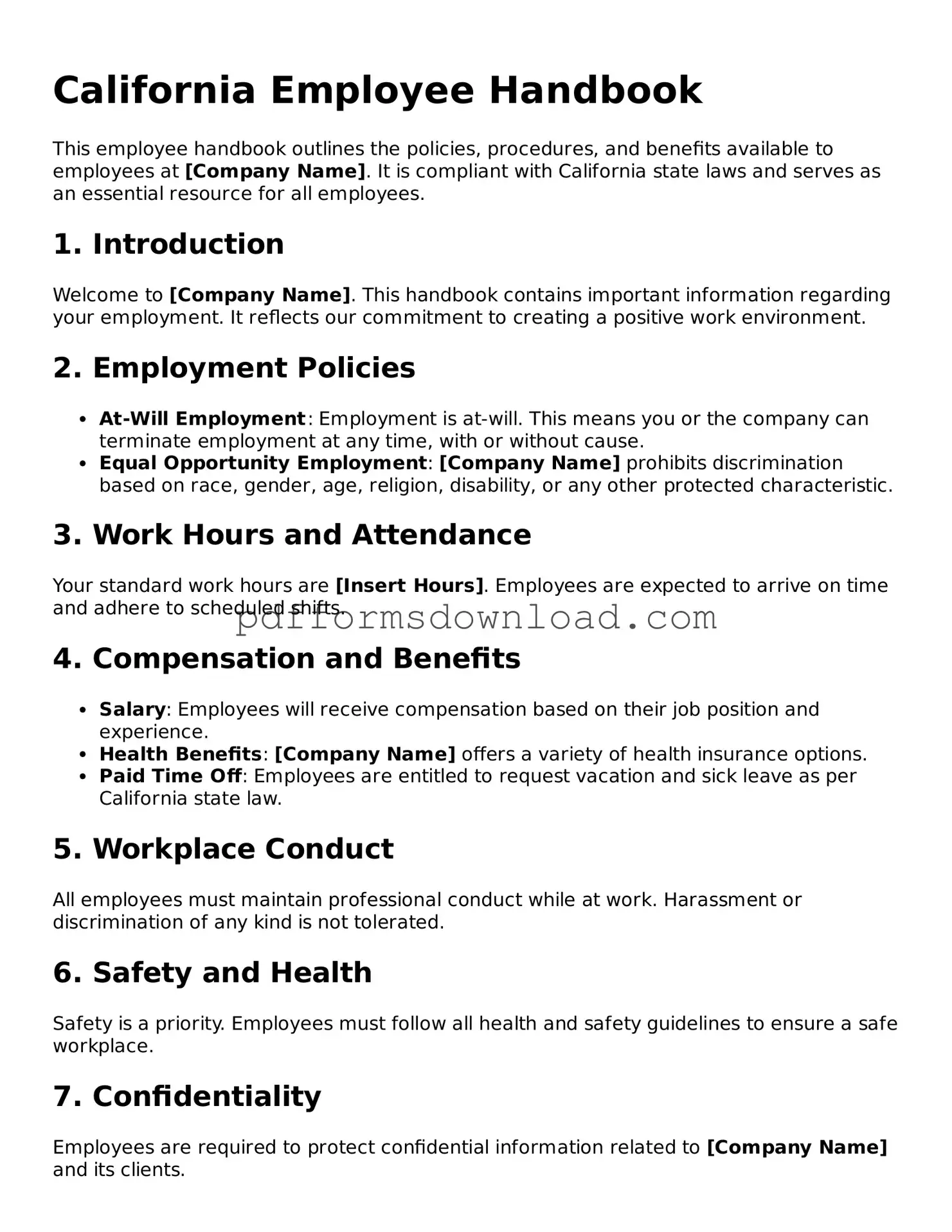What is a California Employee Handbook?
A California Employee Handbook is a document that outlines the policies, procedures, and expectations of an employer regarding their employees. It serves as a guide for both employers and employees, detailing important information such as workplace conduct, benefits, and legal rights. By providing clear guidelines, it helps foster a positive work environment and ensures everyone is on the same page.
Why is it important to have an Employee Handbook?
An Employee Handbook is essential for several reasons. First, it helps protect the employer by establishing clear policies that can mitigate legal risks. Second, it informs employees of their rights and responsibilities, promoting fairness and transparency. Lastly, it can enhance workplace culture by setting the tone for the organization and helping employees understand what is expected of them.
What should be included in a California Employee Handbook?
A comprehensive California Employee Handbook should cover a variety of topics. Key sections typically include an introduction to the company, employment policies, workplace conduct, anti-discrimination and harassment policies, benefits and compensation information, leave policies, and procedures for addressing grievances. Additionally, it should outline safety protocols and any relevant state-specific laws that apply to the workplace.
How often should the Employee Handbook be updated?
It is advisable to review and update the Employee Handbook regularly, at least once a year. Changes in laws, company policies, or workplace culture may necessitate updates. Keeping the handbook current ensures that employees have access to the latest information and helps the company remain compliant with state and federal regulations.
Is it necessary to provide a copy of the Employee Handbook to every employee?
Yes, it is important to provide a copy of the Employee Handbook to each employee. This can be done in physical or digital format. Ensuring that every employee receives the handbook helps to confirm that they are aware of the company’s policies and procedures. It is also beneficial to have employees sign an acknowledgment form indicating that they have received and understood the handbook.
What should an employer do if an employee violates a policy outlined in the Employee Handbook?
If an employee violates a policy in the Employee Handbook, the employer should follow the procedures outlined in the handbook for addressing such violations. This may involve conducting an investigation, discussing the issue with the employee, and determining appropriate disciplinary action. Consistency in enforcing policies is crucial to maintaining fairness and upholding the integrity of the handbook.
